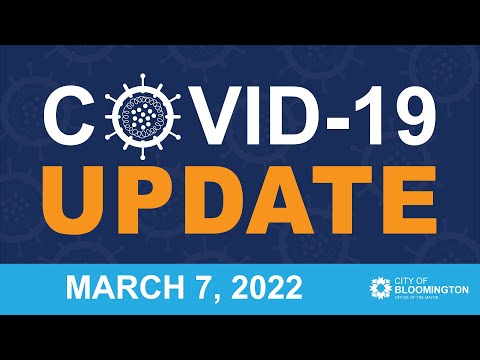Page last updated on September 6, 2021 at 4:20 pm
Hi. This is Mayor John Hamilton wanting to give an update generally. This is Monday, May 4th. First, thanks to everybody for all you're doing in the community to help keep our people safe, our community safe, from healthcare workers to government workers to private-sector folks who make the city work. Thank you for all you're doing, and thanks to all the residents for continuing to support and comply with basics of physical distancing and keeping hygiene, safe at home, and not going to work if you're sick and not taking unessential trips and those kinds of things. We really appreciate it. It has helped. We've flattened the curve locally.
I thought it might be helpful today to give a little update on what the state and the governor, actions that were taken last week, and then the local reaction to that, just to give an update. It can get kind of technical, but let's jump into it a little bit. The governor...First, let me say I appreciate that our governor has explicitly acknowledged that local governments may take a different approach to this than the state does and that that's okay and encouraged. He, in fact, recognized several counties with different situations and encouraged others to consider things locally, and I appreciate that from the governor.
I would say late Friday afternoon last week, the governor announced a number of very substantial changes in plans and made us hustle and jump around trying to respond to them. He basically outlined four key indicators that the state is looking at on deciding how to stage the reopening. The four indicators were more testing, strong contact tracing abilities, hospitals, and healthcare systems that showed they were not being overwhelmed, that they had significant capacity, and then finally, and maybe most importantly, a two-week decline in the cases in the hospital from COVID. He reported all of those indicators meant to the state that they should start moving down a reopening path.
Now we don't actually, I don't know the hospitalization numbers statewide. Those are not public data, and that data doesn't line up with the CDC gating criteria that they use, which focused not on hospitalizations but on overall case numbers and others. So one of the issues we faced locally was we just couldn't see the data. More important locally was that the data that we do have locally did not suggest to us that locally we see a two-week decline in cases or hospitalizations. We haven't seen an explosion, but we have not seen a two-week decline in those cases or hospitalizations. And to us, locally, that's what we need to see. That's what the best health experts in the country and locally here also want to see. And when we did not see that, that meant locally, hey, wait a minute. We're not ready to change the protocols that we have.
I would also add that it's very difficult getting word at 3:30 on Friday afternoon and saying things should be open on Monday. It gives very little chance to work with the local community. So those factors, the fact that we don't have a two-week decline, the primary one, and that we need time to open up rationally and thoughtfully and intentionally, those factors led county, city, and led by the county health department to say last week we're going to hold on two weeks. Keep the status quo locally. That's all to protect public safety. We are all committed to figuring out how do we open up, reopen, revitalize. That's critically important. But we've got to do it safely, so locally we're going to continue to watch to see that we have the indicators that show our caseloads are declining, our healthcare systems are protected, we have adequate contact tracing, we have adequate testing. We won't have adequate testing. We'll have better testing, but we're going to continue to work on that.
Over the next couple of weeks, there's a lot of work going on to work with small businesses and organizations and faith organizations and governments to explore how do we start to open up? It's going to be incremental. It's going to be based on science and health, and it's going to be done in a collaborative way locally. So that's why we separated from the state. The governor encouraged that to happen and I appreciate him doing that. I'm concerned a little bit about how fast the state is moving. I think they've set some artificial guidelines, but locally we're going to be driven by how do we protect the public health and monitor the data to see that as each step is available, we take it, we move forward, we monitor. Did we cause a backslide or can we keep moving?
So you're welcome to reach out to our office at the Office of the Mayor as we continue to work on this. I'll keep you updated. You can check out our website and other things, but we're going to keep doing what we can locally to protect the health and to recover. And thank you all so much for what you're doing in that regard. Keep taking care of each other, and keep taking care of Bloomington. Thank you.

